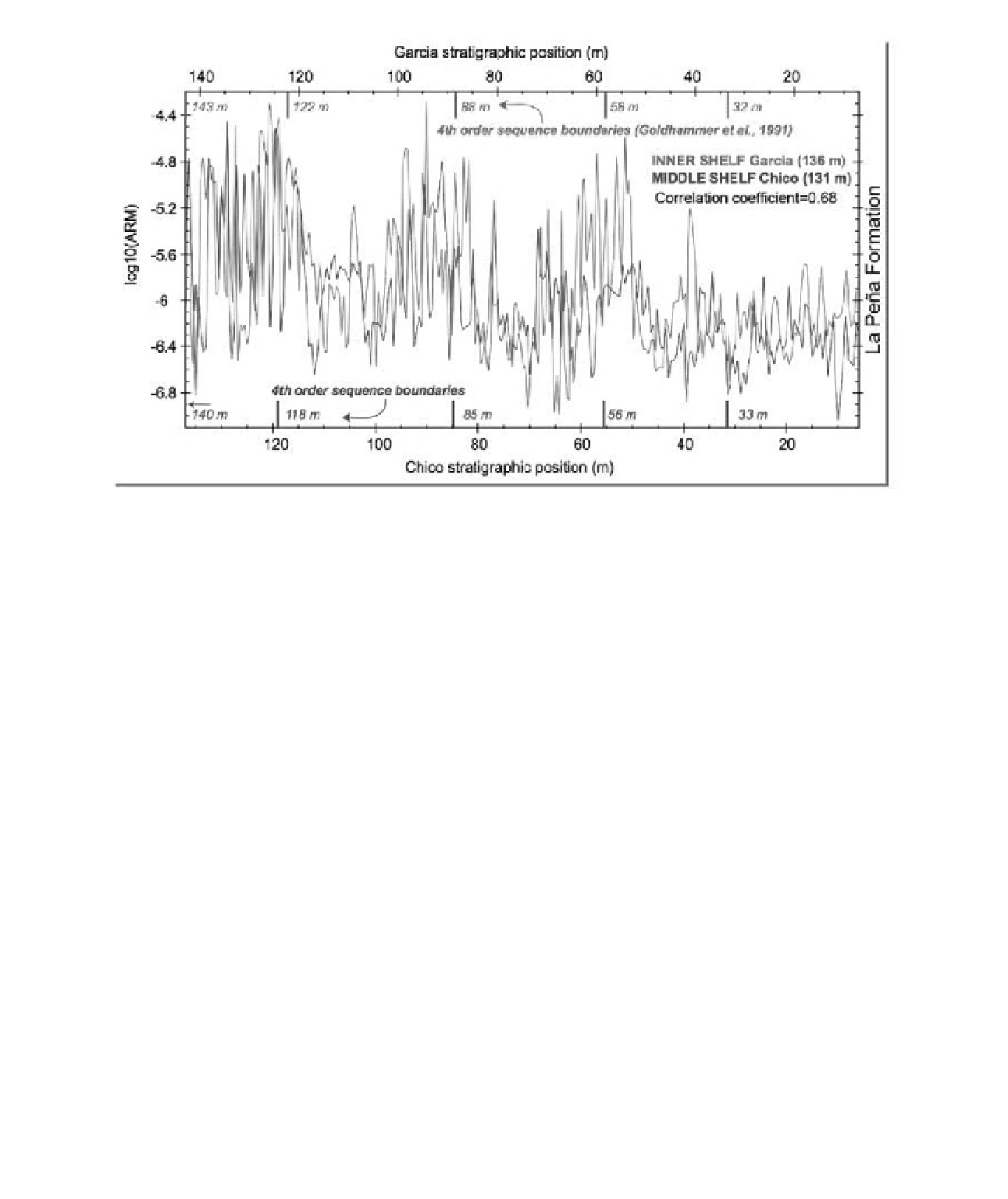Geology Reference
In-Depth Information
Fig. 8.15
ARM cyclostratigraphy for the Cretaceous Cupido Formation of northeastern Mexico. The ARM variations show
long period and short period cycles. The fourth-order sequence boundaries identifi ed by sequence stratigraphy match the
maximum of the long-period variations in ARM. Figure from Hinnov
et al
. (2009). LA Hinnov, D Anastasio, D Latta, K
Kodama and M Elrick, Milankovitch-controlled paleoclimate signal recorded by rock magnetics, Lower Cretaceous Platform
carbonates of northern Mexico, American Association of Petroleum Geologists, Search and Discovery Article #40388, 2009,
AAPG. (See Colour Plate 21)
shallowing upward cycles. Finally, if the sequence
boundaries are assumed to indicate the 405 kyr long
eccentricity cycle, thus assigning time to the ARM data
series and essentially tuning the ARM data series to
long eccentricity, an MTM spectral analysis shows
spectral peaks at 100 kyr, 44 kyr and 20 kyr, expected
Milankovitch frequencies (Fig. 8.17). The intepretation
made by Latta
et al
. (2006) is that the ARM is a record
of changing global aridity due to the infl uence of pre-
cession (20 kyr cycle) on the monsoon.
interval) for over 800 m of section to develop a high-
resolution chronostratigraphy to study fold growth
rates. A magnetostratigraphy was also measured for
the Arguis so that absolute time would constrain the
periodicities observed in the rock magnetic cyclo-
stratigraphy. The magnetostratigraphy provides coarse
time control and the cyclostratigraphy is designed to
provide high-resolution (
c
. 20 kyr) time for the Arguis
growth strata. The magnetostratigraphy was tied to
the Geomagnetic Polarity Time scale (Gradstein
et al.
2004) from a detailed biostratigraphy developed for the
Arguis Formation. This is a very well-constrained
study and is a good test of the reality of Milankovitch
forcing of magnetic mineral parameters in a marine
sedimentary section.
Rock magnetic measurements indicate that magnet-
ite is the primary depositional magnetic mineral, but
there are also Fe sulfi des (most likely greigite) present
in the rocks that are most certainly secondary and
ARGUIS FORMATION
Another example of a rock magnetic cyclostratigraphic
study comes from the study by Kodama
et al.
(2010) of
the Eocene Arguis Formation in the Spanish Pyrenees.
The near-shore marine marls of the Arguis were
sampled at high resolution (0.75-1.5 m sampling




Search WWH ::

Custom Search